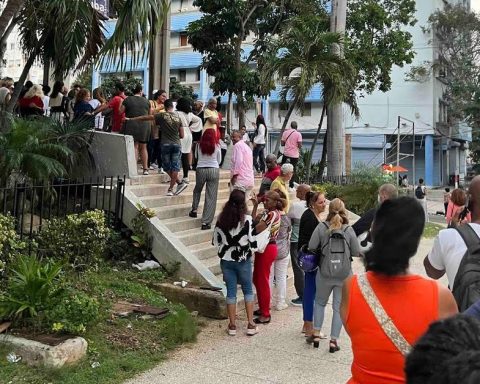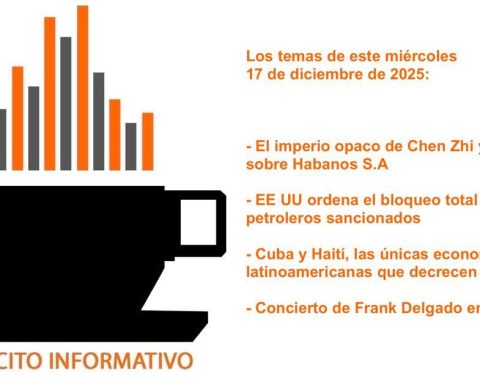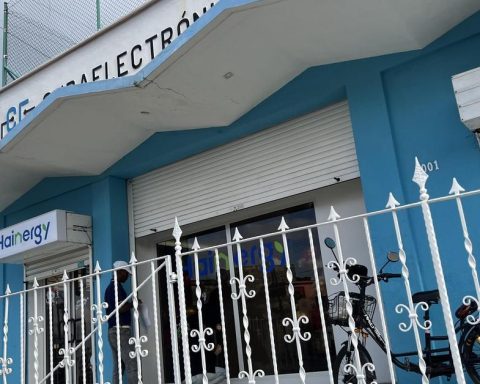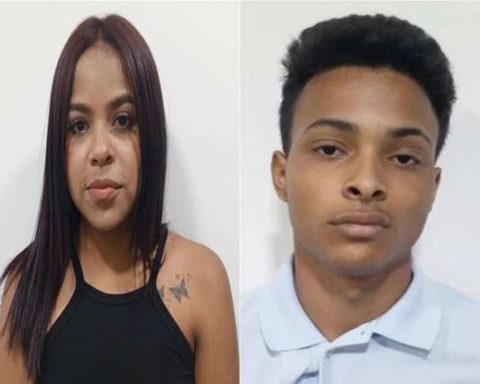Cracks, peeling green and white paint, and a flag of the July 26 Movement disfigure the façade of house number 361 on San Basilio street, today Bartolomé Masó, in Santiago de Cuba. In 1960, it was the residence of the Pitt-Wasmer family, who went into exile after months of tension with Fidel Castro; Today it is the provincial headquarters of the Communal Services.
When Cuban businessman William Pitt, heir to the Pitt-Wasmers, learned that the property expropriated from his parents had become a government office known for its inefficiency, he pointed out an unfortunate coincidence: in the same space where they are now discussing, without success , the problems related to hygiene and deaths in the city, the opening of the Santa Ana cemetery was planned in 1827, the first public cemetery in Santiago de Cuba.
Pitt, saddened by the current state of the house, tells 14ymedio that his great-grandfather José Ferrer Mora had the building built around 1840. The construction underwent various reforms throughout the 19th and 20th centuries, the last of which was in 1958, just before Castro’s victory. Despite the typical socialist “murals”, the shoddy furniture and the slogans, Pitt manages to recognize in the photographs the rooms where he played with his sisters when he was a child.
“My parents, William Pitt Ferrer and Berta Wasmer Arnaz, lived there,” explains the businessman
“My parents, William Pitt Ferrer and Berta Wasmer Arnaz, lived there,” explains the businessman. After the couple left with their four children for Miami in 1960, Pitt’s grandmother, María Josefa Arnaz, and one of her daughters, Lucy Wasmer, moved into the San Basilio house. The two nannies who cared for the Pitt-Wasmer girls also stayed there.
“In January 1967, María Josefa Arnaz died and the nannies decided to go live with their sisters, in other areas of Santiago de Cuba,” recalls Pitt. “Lucy was left alone, with a friend who was going to visit her and, when she could, she accompanied her.”
Ileana, a resident of San Basilio street interviewed by 14ymedio, remembers very well Lucy Wasmer and the situation of the house in the fifties. “She was very close to one of my dad’s aunts, who passed away many years ago. There aren’t many people left who originally lived here. Most of them have left or died. Only a few of us are left,” she says.
In the current provincial headquarters of the Communal Services, Ileana refers, there are offices and meetings of the sector are held. Officials try to keep the building in good condition, which once had a fountain in the courtyard that now, says the neighbor, is “dry.”
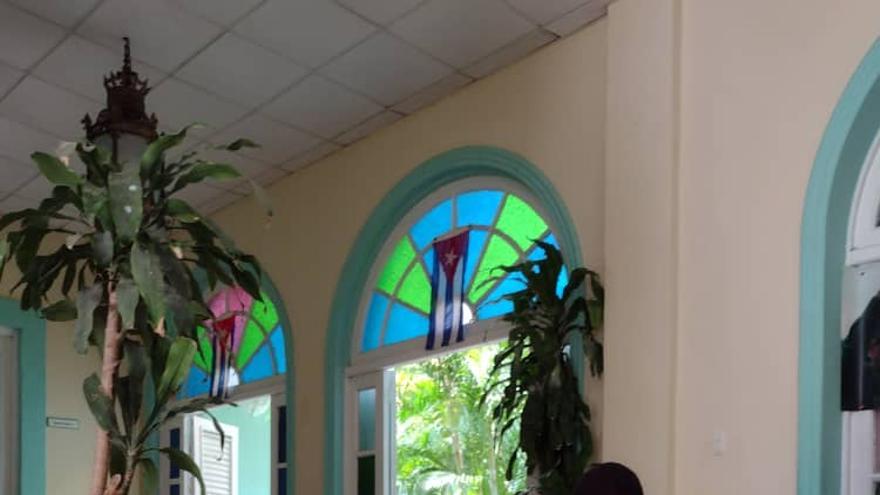
Lucy Wasmer received her permission to leave the United States in 1967, a few days after her mother died. “Immediately the government trucks arrived to take everything that was still in the house,” says Pitt.
The house had already suffered a plunder when his family left, whose objective had been to dismantle the office-library of William Pitt Ferrer, where the documents and archives of his properties were kept. “He also had a safe, as big as a refrigerator,” says the businessman, “similar to the ones he used in the offices he had in his mines in Holguín, to keep the money for the workers’ pay. Only this one contained the titles property of the mines and other valuable papers. All of that was confiscated by the Government.”
As soon as Lucy closed the door of the building, in which she had to wait two months before being able to leave in 1967, the officials seized the house. “All my cousins had already gone into exile, the majority to the US, but also to Venezuela, Spain and Mexico.” Lucy, the last of the Wasmers to leave Cuba, died in exile in 1969.
Willing for the Havana regime to answer for the properties seized from his family, one of the most prosperous in Cuba when the Revolution triumphed, William Pitt has denounced the cloudy business of the Cuban authorities with the Canadian company Sherritt, with which they intend to settle a million-dollar debt allowing the overexploitation of the nickel and cobalt mines of Moa and Punta Gorda, in Holguín, which Castro illegally confiscated from the Pitt-Wasmers.
That the Communal Services now occupy number 361 San Basilio street is ironic, Pitt reasons. “In that place, they talked many times about the Santa Ana cemetery, built on land that my great-great-grandfather Eduardo Ferrer, father of José Ferrer Mora, had donated.”
The businessman recalls that, according to European custom, the first cemeteries in Cuba were located in the vicinity of the churches. With the increase in the population in the main cities, such as Santiago de Cuba, it was necessary to look for alternatives to guarantee urban hygiene.
In 1813, the people of Santiago began to look for land to build a new cemetery. After assessing different locations, including the so-called Loma del Intendente, the project was postponed until 1821, when the cemetery of the church of Santa Lucía –just one block from the Pitt-Wasmer house– collapsed due to the rains and shallow burials.
“It was then that my great-great-grandfather Eduardo Ferrer donated the land of Los Altos de Santa Ana, which he owned by a Royal Commission granted in 1789,” says Pitt.
Alarmed by the proximity of the cemetery to a well that supplied the neighborhood, residents expressed their fear of water contamination. “It was then that my great-great-grandfather Eduardo Ferrer donated the land of Los Altos de Santa Ana, which he owned by a Royal Commission granted in 1789,” says Pitt.
The Santa Ana cemetery was inaugurated on August 5, 1825 by the Archbishop of Santiago de Cuba, Mariano Rodríguez de Olmedo, and remained in operation until 1868, when, just after the start of the Ten Years’ War, the cemetery was opened. of Santa Ifigenia.
The Pitt-Wasmers were one of the city’s benefactor families, says the businessman, since in addition to the cemetery, they collaborated with other social works. In 1870, for example, Pitt’s great-great-grandmother, Mariana Mozo de la Torre, offered land for the construction of the Desamparados convent – run by the religious order of the Servants of Mary – and the church of the same name, located in Princesa and Barracones streets.
In the Altos de Santa Ana themselves, years after the inauguration of the cemetery, the Los Angeles clinic was built, on a plot of land donated by the businessman’s great-grandmother, Cristina Correoso Mozo de la Torre.
Both the current state of the Pitt-Wasmer house and the management of Communal Services in the city seem to Pitt an “embarrassing” fact. Several weeks ago, the official newspaper Sierra Maestra public an article revealing the lousy obituary service in the province.
The carelessness and lack of respect towards the recently deceased, the disorder in the cemeteries –including that of Santa Ifigenia, of high patrimonial value because figures such as José Martí or Carlos Manuel de Céspedes are buried in it, as well as Fidel Castro– and the deficient transportation capacity, with only ten functional vehicles out of the 30 that the province had, are some of the most serious issues in a situation that managers barely describe as “complex.”
Added to the depressing outlook, for Pitt, is a dilemma of historical justice: the regime ruins everything in its path.
Added to the depressing outlook, for Pitt, is a dilemma of historical justice: the regime ruins everything in its path, including the family home, close to other confiscated property, the Bacardi family home –now the Rum Museum–, which He has also denounced the looting that Castro launched on the most important liquor company on the Island in 1959.
The drama that it means for the Pitt-Wasmers to verify the deterioration of their ancestors’ house, assures the businessman, is something that only those who have delved into the history of Santiago de Cuba can understand. And of course his family members.
________________________
Collaborate with our work:
The team of 14ymedio He is committed to doing serious journalism that reflects the reality of deep Cuba. Thank you for accompanying us on this long road. We invite you to continue supporting us, but this time making you a member of our newspaper. Together we can continue transforming journalism in Cuba.
